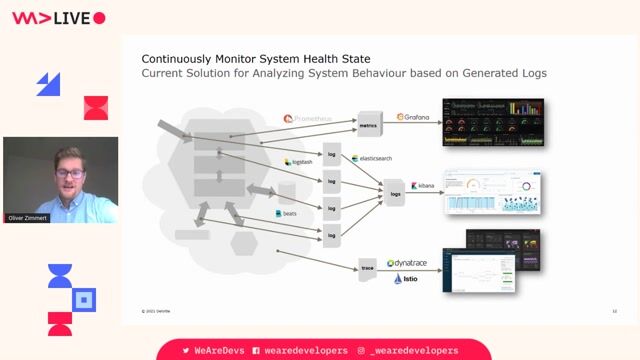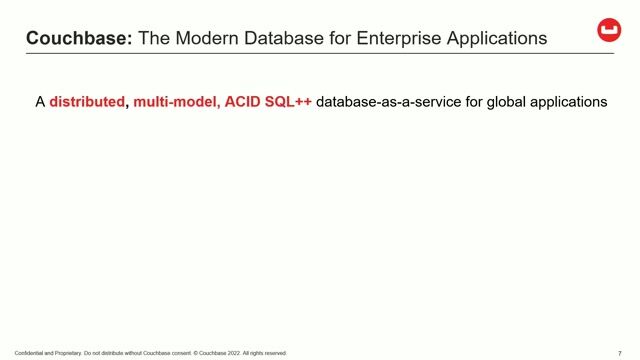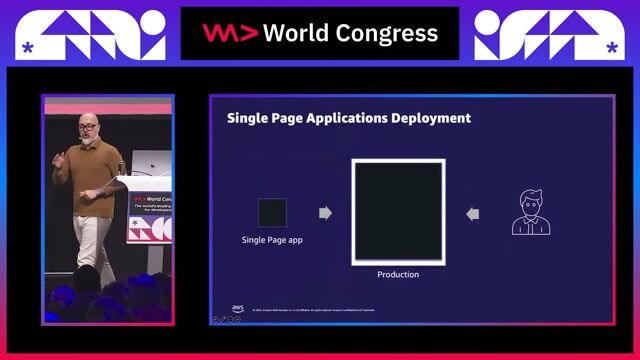Florian Mair
Reliable scalability: How Amazon.com scales on AWS
#1about 4 minutes
From a single monolith to a service-oriented architecture
Amazon's initial architecture consisted of a single C/C++ binary and a large database, which was broken down into a service-oriented architecture to enable faster development and scaling.
#2about 3 minutes
Achieving massive scale on AWS for Prime Day
Prime Day traffic, with DynamoDB handling 126 million requests per second, illustrates the need for reliability, which is achieved through the principles of the AWS Well-Architected Framework.
#3about 3 minutes
How IMDb uses serverless microservices and GraphQL
IMDb migrated from a monolith to AWS Lambda, segmenting its workload into distinct microservices that are unified into a single API endpoint using GraphQL and a federated schema.
#4about 2 minutes
IMDb's gateway architecture and two-pizza team ownership
IMDb's backend uses a gateway-based architecture with a schema manager, where each microservice is fully owned and operated by a small, autonomous 'two-pizza team'.
#5about 3 minutes
Scaling AWS Lambda to handle high traffic spikes
To handle 800,000 requests per minute, IMDb uses AWS Lambda's auto-scaling capabilities and provisioned concurrency to keep functions warm and eliminate cold start latency.
#6about 2 minutes
Using AWS WAF and CloudFront for security and performance
IMDb improves reliability and performance by using AWS Web Application Firewall (WAF) to block malicious bot traffic and Amazon CloudFront CDN to reduce latency for global users.
#7about 5 minutes
Implementing fault isolation with a cell-based architecture
Amazon's fulfillment centers use a cell-based architecture to achieve fault isolation, ensuring that a failure in one cell does not impact the operations of others.
#8about 1 minute
Managing cells with separate AWS accounts and assignment tools
Cells are implemented as separate AWS accounts to create hard boundaries, and a custom tool assigns fulfillment centers to cells to maintain balanced resource distribution.
Related jobs
Jobs that call for the skills explored in this talk.
Matching moments

02:13 MIN
The evolution of architecture towards serverless models
Serverless on Cloud

01:14 MIN
Understanding Netflix's scale and infrastructure goals
DevOps at Netflix

00:05 MIN
Amazon's early monolith and database scaling challenges
Building Systems that Last

02:33 MIN
The high-level serverless architecture for the application
How we built an AI-powered code reviewer in 80 hours

21:11 MIN
Assessing system workloads with the well-architected framework
We adopted DevOps and are Cloud-native, Now What?

17:27 MIN
Designing the AWS architecture for real-time vehicle control
Remote Driving on Plant Grounds with State-of-the-Art Cloud Technologies

28:34 MIN
Answering questions on data volume, challenges, and databases
Remote Driving on Plant Grounds with State-of-the-Art Cloud Technologies

22:15 MIN
Q&A on monoliths, serverless, and specific use cases
Why you shouldn’t build a microservice architecture
Featured Partners
Related Videos
 34:36
34:36Building Systems that Last
Werner Vogels
 50:06
50:06Single Server, Global Reach: Running a Worldwide Marketplace on Bare Metal in a Cloud-Dominated World
Jens Happe
 30:03
30:03From 0 to 1.000.000: How to build a serverless raffle service for hyperscale
Marco Plaul & Martin Sakowski
 25:18
25:18Building Reliable Serverless Applications with AWS CDK and Testing
Raphael Manke
 28:12
28:12Scaling: from 0 to 20 million users
Josip Stuhli
 24:22
24:22Database Magic behind 40 Million operations/s
Jürgen Pilz
 27:08
27:0830 powerful AWS hacks in just 30 minutes: Boost your developer productivity
Modood Alvi
 24:50
24:50Micro-Frontends Discovery
Luca Mezzalira
From learning to earning
Jobs that call for the skills explored in this talk.

Senior Backend Developer (m/f/d)
Laserhub GmbH
Stuttgart, Germany
Remote
€70-80K
Senior
MySQL
Docker
MongoDB
+2

Domain Architect Ricardo Platform (f/m/d) | 80-100% | Hybrid working model | Valbonne France
SMG Swiss Marketplace Group
Canton de Valbonne, France
Senior

Domain Architect Ricardo Platform (f/m/d) | 80-100% | Hybrid working model | Zürich Switzerland
SMG Swiss Marketplace Group
Sachseln, Switzerland
Senior

DevOps Engineer – Kubernetes & Cloud (m/w/d)
epostbox epb GmbH
Berlin, Germany
Intermediate
Senior
DevOps
Kubernetes
Cloud (AWS/Google/Azure)


Digital Sovereignty Specialist Solutions Architect, Sovereign Cloud, Sovereign Cloud
Amazon.com, Inc
Senior
DevOps
Amazon Web Services (AWS)

Senior Delivery Consultant- GenAI/ML, AWS, Professional Services
AWS EMEA SARL (Germany Branch)
Senior
DevOps
Python
Terraform
Machine Learning
Amazon Web Services (AWS)
+1

Senior Delivery Consultant- GenAI/ML, AWS, Professional Services
AWS EMEA SARL (Germany Branch)
Senior
DevOps
Python
Terraform
Machine Learning
Amazon Web Services (AWS)
+1

Cloud Site Reliability Engineer onsite or remote in Germany
Scalable GmbH
Remote
DevOps
Python
Terraform
AWS Lambda
+1